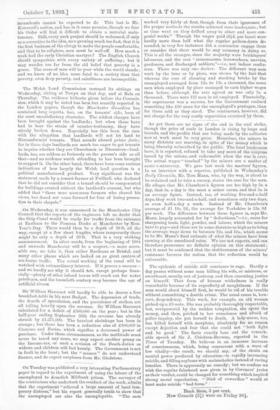On Tuesday was published a very interesting Parliamentary paper in
regard to the experiment of using the labour of the unemployed to demolish Millbank prison. The surveyor of the contractors who undertook the conduct of the work, admits that the experiment "relieved a large amount of local tem- porary distress," but his report generally tends to show that the unemployed are also the unemployable. " The men worked very fairly at first, though from their ignorance of the proper methods the results achieved were inadequate ; but as time went on they drifted away to other and more con- genial works." Though the wages paid (6d. per hour) were hardly more than half what the regular pullers-down de- manded, in very few instances did a contractor engage them or consider that there would be any economy in doing so. This is all the stranger, since the majority were bricklayers' labourers, and the rest " stonemasons, ironworkers, navvies, gardeners, and discharged soldiers,"—i.e., not indoor crafts- men. There was only one docker. The different Way men work by the hour or by piece, was shown by the fact that whereas the cost of cleaning and stacking bricks by the unemployed averaged from 12s. to 13s. a thousand, the same men when employed by piece managed to earn higher wages than before, although the rate agreed on was only '78. a thousand. There were 122 men in all employed. Financially, the experiment was a success, for the Government realised something like £60 more for the unemployed's pentagon, than for those sold as they stood. The contractors, however, did not charge for the very costly supervision exercised by them.






































 Previous page
Previous page